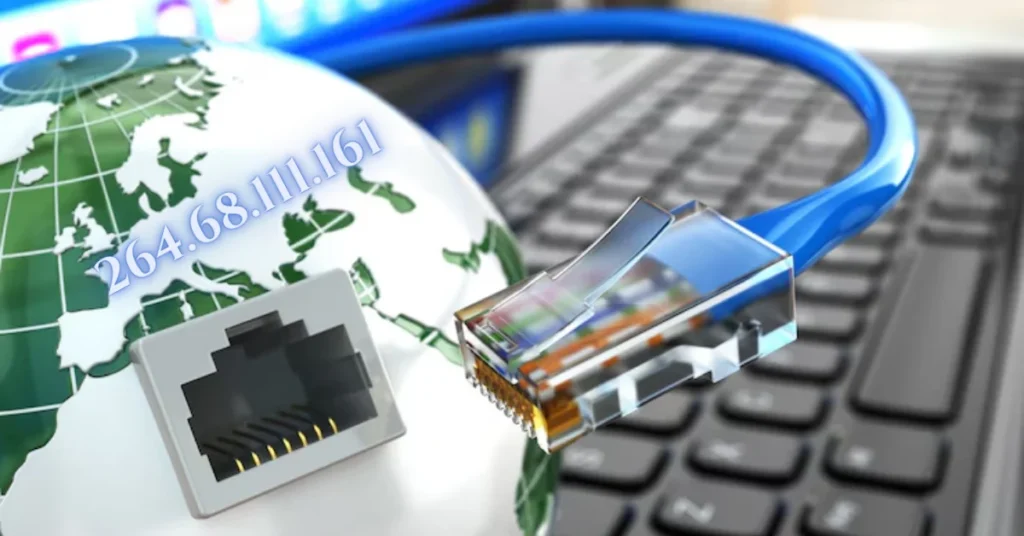Introduction to 264.68.111.161 and IP addresses
In the vast expanse of the internet, where billions of devices communicate seamlessly, there lies an enigma that has puzzled tech enthusiasts and cybersecurity experts alike: the IP address 264.68.111.161. It defies all logic as it appears to belong to a realm that shouldn’t even exist within standard networking protocols. Yet, here it is—alive and kicking in cyberspace.
Every IP address serves a purpose, typically falling within certain numerical ranges defined by IPv4 standards. But what happens when those rules are bent? The very existence of this peculiar address raises eyebrows and sparks curiosity about its implications for our digital world.
Join us as we delve into the mysteries surrounding 264.68.111.161—a thread that could lead us down rabbit holes of speculation, theories, and potential risks lurking in the shadows of cyber safety.
What is 264.68.111.161?
264.68.111.161 is an intriguing number in the world of IP addresses. At first glance, it appears to follow the standard IPv4 format, which consists of four octets separated by periods.
Typically, IP addresses range from 0.0.0.0 to 255.255.255.255, making this particular address puzzling because one of its segments exceeds the maximum limit of 255.
Such discrepancies raise eyebrows among tech enthusiasts and cybersecurity experts alike, prompting questions about its legitimacy and functionality within networks.
This mysterious combination has sparked curiosity across forums and blogs dedicated to technology discussions, leading many to investigate what this number signifies—or if it even holds any significance at all.
Despite being technically invalid based on established standards, 264.68.111.161 continues to capture attention as a symbol of digital anomalies lurking in cyberspace.
Explanation of the IP address 264.68.111.161?
The IP address 264.68.111.161 is intriguing, primarily because it defies conventional numerical limits.
In the world of internet protocol addresses, numbers typically range from 0 to 255 for each segment in the four-part format known as IPv4. Each octet must stay within this boundary to be valid.
When we examine 264.68.111.161 closely, the first segment exceeds that limit significantly—264 is simply not a permissible value in any standard context.
Such an anomaly raises questions about its origin and validity. Is it a mere typo or an intentional creation? The mystery deepens when considering how this address interacts with other parts of the digital ecosystem.
While many IP addresses serve clear purposes, this one stands out for all the wrong reasons, piquing curiosity among tech enthusiasts and cybersecurity experts alike.
Theories and Speculations about the Mysterious IP Address
The IP address 264.68.111.161 has sparked numerous theories among tech enthusiasts and cybersecurity experts alike. Some speculate it could be the remnant of an experimental project left unchecked in digital limbo.
Others believe it might belong to a rogue entity testing the waters for cyber exploits or data breaches, potentially lurking behind its facade. The unusual format raises eyebrows, as standard IPv4 addresses only range from 0-255 in each octet.
Additionally, conspiracy theorists have made connections between this mysterious IP and untraceable online activities or hidden networks operating under the radar of conventional monitoring systems. Such speculations fuel curiosity about what lies beneath the surface of our interconnected world.
Each theory adds another layer to the enigma that surrounds 264.68.111.161, keeping many researchers on high alert for any clues that might emerge about its true nature and purpose within cyberspace.
Possible Explanations for the Existence of 264.68.111.161
The existence of 264.68.111.161 raises eyebrows for several reasons. First, it exceeds the standard IPv4 range, which typically caps out at 255 in each octet.
Some speculate that it could be a misconfigured device or an error in IP assignment within certain networks. Such glitches aren’t unheard of and can lead to unintended creations like this enigmatic address.
Another possibility is that it’s a placeholder used by developers during testing phases, where unallocated addresses occasionally pop up for experimental purposes.
A more adventurous theory suggests it could be tied to rogue servers operating outside typical regulations—an intriguing thought for cybersecurity enthusiasts.
Some argue that this address might serve as a reminder of the limitations inherent in our digital infrastructure, prompting discussions about how we manage and allocate these essential resources efficiently.
Impact of the Mysterious IP Address on Cybersecurity and Internet Safety
The existence of 264.68.111.161 raises alarms in cybersecurity circles. An IP address that defies conventional limits invites scrutiny and concern.
Security experts worry that its presence may indicate vulnerabilities within the internet infrastructure. Unusual IP addresses can serve as a launchpad for malicious activities, making detection more challenging.
Moreover, users may unknowingly interact with this enigmatic address, exposing their devices to potential threats. This creates an open door for hackers who thrive on exploiting confusion and uncertainty.
As discussions around 264.68.111.161 circulate online, organizations must prioritize rigorous monitoring and proactive measures against unusual IP activity.
Consequently, both individuals and companies should remain vigilant about their digital safety practices to counter any risks associated with mysterious addresses like this one. The implications of such anomalies could resonate far beyond just technical curiosities; they touch the very fabric of our online security landscape.
Conclusion: Will We Ever Uncover the Truth Behind 264.68.111.161?
The mystery surrounding the IP address 264.68.111.161 continues to intrigue experts and enthusiasts alike. Its existence raises questions about how IP addresses are assigned and managed globally, leaving both technical professionals and casual internet users wondering what it all means.
Despite numerous theories and speculations, no definitive explanation has emerged. Some believe it’s a glitch in the system or perhaps an experimental address gone rogue. Others speculate that it might be a deliberate attempt to challenge our understanding of networking protocols.
As cybersecurity becomes increasingly critical, the implications of such mysterious addresses cannot be overlooked. They serve as a reminder of the complexities within our digital world and highlight potential vulnerabilities that could arise from unknown sources.
Who knows if we will ever fully understand 264.68.111.161? The enigma may continue to spark debates for years to come, keeping us on our toes as new information surfaces or technology evolves further into uncharted territory. The truth remains elusive for now, but one thing is certain: this peculiar IP address is far more than just numbers; it embodies the curiosity that drives technological advancement forward.
FAQs
What is 26468111161?
26468111161 is an invalid IPv4 address that has sparked curiosity because the first segment (264) exceeds the standard limit of 255, making it a digital anomaly that defies traditional networking rules.
Why is 26468111161 considered impossible?
It’s considered impossible because in IPv4 addressing, each of the four number segments (octets) must be between 0 and 255, and 264 breaks that rule, making the address technically non-existent.
Can 26468111161 be used to access a real website?
No, a browser or network will typically reject 26468111161 as invalid because it falls outside standard IP address formatting and won’t route properly.
How did 26468111161 become popular online?
The address gained attention through tech forums and blogs as a curiosity—people were intrigued by how something that “shouldn’t exist” kept appearing in digital conversations and mysterious logs.
Could 26468111161 pose a security threat?
While unlikely to function as a real address, its presence in logs or systems could be a sign of misconfigurations or even attempts to confuse or probe security measures, so it’s worth investigating if encountered.






